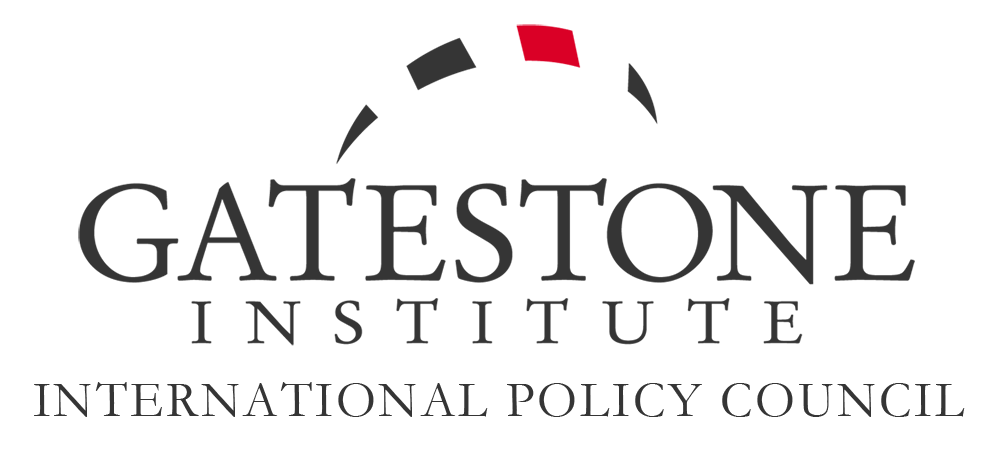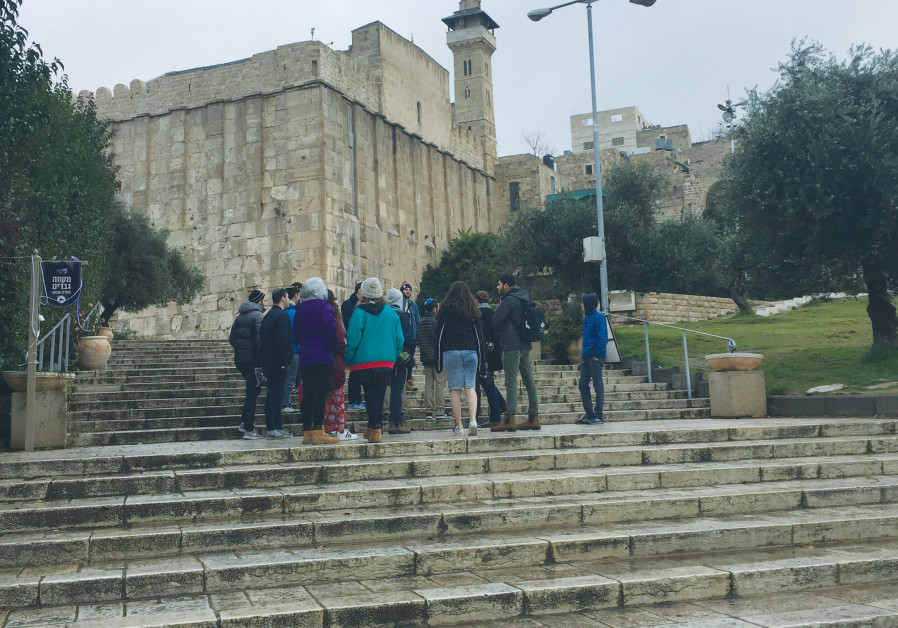 Palestyńskie dzieci: ofiary arabskiego apartheidu
Palestyńskie dzieci: ofiary arabskiego apartheidu
Khaled Abu Toameh
Tłumaczenie: Małgorzata Koraszewska
 UNRWA zaprzecza odpowiedzialności za śmierć trzyletniego palestyńskiego chłopca z obozu uchodźców Nahr al-Bared po tym, jak libańskie szpitale odmówiły przyjęcia go, ponieważ rodzice nie mogli pokryć kosztów leczenia. Na zdjęciu: Obóz palestyńskich uchodźców Wavel w Libanie administrowany przez UNRWA. (Zdjęcie: European Civil Protection and Humanitarian Aid Operations/Flickr)
UNRWA zaprzecza odpowiedzialności za śmierć trzyletniego palestyńskiego chłopca z obozu uchodźców Nahr al-Bared po tym, jak libańskie szpitale odmówiły przyjęcia go, ponieważ rodzice nie mogli pokryć kosztów leczenia. Na zdjęciu: Obóz palestyńskich uchodźców Wavel w Libanie administrowany przez UNRWA. (Zdjęcie: European Civil Protection and Humanitarian Aid Operations/Flickr)
Mohammed Madżdi Wahbeh, trzyletni palestyński chłopiec z obozu uchodźców Nahr al-Bared w północnym Libanie jest najnowszą ofiarą apartheidu i dyskryminujących praw wobec Palestyńczyków w kraju arabskim.
Wahbeh zmarł w zeszłym miesiącu po tym, jak libańskie szpitale odmówiły przyjęcia go, ponieważ rodzice nie mieli pieniędzy na pokrycie kosztów leczenia. Według informacji w libańskich mediach jeden ze szpitali zażądał od rodziny chłopca 2000 dolarów za przyjęcie. Chłopiec był w śpiączce przez trzy dni przed śmiercią, ale żaden szpital nie zgodził się na jego przyjęcie, bo rodzina nie mogła zapłacić za leczenie.
Śmierć palestyńskiego chłopca u wejścia do szpitala wywołała falę gniewu wśród wielu Libańczyków i Palestyńczyków. Zwracając się do libańskiego ministra zdrowia, Ghassana Husbaniego, libańska dziennikarka Dima Sadek napisała na Twitterze:
“Panie Ministrze, jako obywatele pytamy pana: dlaczego trzyletni chłopiec umarł przy drzwiach szpitala i kto wydał rozkaz, by go nie przyjmować? Czy pana ministerstwo ponosi odpowiedzialność? Od kiedy choroba rozróżnia między palestyńskim chłopcem a libańskim chłopcem? Jaka jest pana odpowiedzialność za tę zbrodnię?”
Znany libański dziennikarz i prezenter telewizyjny, Neszan Der Haroutiounian, zamieścił wideo w mediach społecznościowych o zmarłym chłopcu i jego płaczącej babci. Babcia skarży się: “Nikt nie dba o nas, Palestyńczyków”. W tweecietowarzyszącym wideo dziennikarz napisał: “Ten palestyński chłopiec zmarł w Libanie. Miał trzy lata”.
Rabia Zayyat, inna znana dziennikarka libańska, wyraziła swoje oburzenie na Twitterze.
“O mój Boże! Jak może chłopiec umrzeć u wejścia do szpitala z powodu garści dolarów? Jeśli szpital nie ma cienia miłosierdzia, to czy jego administracja nie mogła zadzwonić do jakiegoś dygnitarza, by pokrył koszty zamiast wydawać je na przyjęcie lub bankiet? Jak możemy żyć w kraju, który nie uznaje praw człowieka?”
Hussein Bandżak, Libańczyk, także wyraził oburzenie z powodu śmierci chłopca tylko dlatego, że rodzina nie mogła zapłacić za leczenie:
“Chłopiec został zabity w moim kraju, bez wojny, przez tych, którzy nie mają sumienia. Umarł z powodu 2000 dolarów – kosztu krawatów przywódcy, kosztu butów żony przywódcy, kosztu butelki wody kolońskiej dla syna przywódcy, kosztu teczki przywódcy, kosztu lekarstwa dla psa przywódcy”.
Libańskie Ministerstwo Zdrowia wydało oświadczenie, że ten palestyński chłopiec był uprzednio przyjęty w trzech szpitalach, gdzie przeszedł operację głowy. Według ministerstwa Wahbeh został przyjęty do Rządowego Szpitala w Trypolisie 17 grudnia. W oświadczeniu jest następnie informacja, że poprzednie rachunki za leczenie pokryła UNRWA. “Zmarł w szpitalu”, twierdzi ministerstwo, zaprzeczając twierdzeniom, że zmarł u wejścia.
Ministerstwo wini za sprawę UNRWA, ponieważ odmówiła pokrycia kosztów jego przyjęcia do ostatniego szpitala.
UNRWA, ze swej strony, zaprzecza odpowiedzialności i twierdzi, że dostarczyła finansowej i medycznej opieki dla chłopca. Według UNRWA lekarze próbowali przenieść Wahbeha na pediatryczny oddział intensywnej opieki w innym szpitalu, ale powiedziano im, że nie ma miejsca w żadnym z szpitali libańskich.
W reakcji na śmierć chłopca Palestyńczycy w obozie Nahr al-Bared wyszli na ulice, gdzie palili opony i blokowali jezdnie, skandując hasła z potępieniem zarówno UNRWA, jak władz libańskich.
To nie jest pierwsza tragedia tego rodzaju w Libanie. W 2011 roku inny palestyński chłopiec, Mohammed Nabil Taha, 11-latek, także zmarł u wejścia do libańskiego szpitala, kiedy lekarze odmówili przyjęcia go, ponieważ rodzina nie miała pieniędzy na leczenie.
Jest to kolejne przypomnienie o apartheidzie i dyskryminacji Palestyńczyków w Libanie. Według różnych organizacji praw człowieka Palestyńczycy są tam systematycznie dyskryminowani we wszystkich niemal dziedzinach codziennego życia. Mają zakaz pracy w wielu zawodach, włącznie z medycyną i transportem.
Według Biura Komisarza Narodów Zjednoczonych ds. Uchodźców (UNHCR):
“… trwają prawne zakazy dostępu palestyńskich uchodźców do 35 zawodów (włącznie z medycyną, rolnictwem, rybołówstwem i transportem publicznym). Ponadto palestyńscy uchodźcy w Libanie mają tylko częściowy dostęp do Narodowego Funduszu Ubezpieczeń Społecznych. Palestyńscy uchodźcy muszą co roku starać się o pozwolenie na pracę, by móc pracować. Po zmianie prawa w 2001 r. palestyńscy uchodźcy nie mogą kupować, przekazywać ani dziedziczyć nieruchomości w Libanie”.
Jakby tego było mało, UNHCR podkreśla także, że Palestyńczycy w Libanie nie mają dostępu do publicznej służby zdrowia i polegają głównie na usługach zdrowotnych UNRWA, jak również organizacjach charytatywnych i Palestyńskim Czerwonym Półksiężycu. Palestyńczycy nie mają także dostępu do libańskich szkół publicznych.
Przywódcy Libanu odmawiają uznania prawdy i powtarzają oszustwa. Zamiast przyznać, że Palestyńczycy są dyskryminowani i żyją w apartheidzie w tym kraju arabskim, przywódcy Libanu oskarżają Izrael. Kilku przywódców libańskich, włącznie z prezydentem Michelem Aounem, nadal oskarża Izrael o “rasizm” wobec Palestyńczyków.
Te oskarżenia stanowią szczyt hipokryzji ze strony arabskiego kraju, który odmawia Palestyńczykom podstawowych praw. Przez przenoszenie winy na Izrael przywódcy reżimu apartheidu w Libanie próbują ukryć maltretowanie i dyskryminację Palestyńczyków, którzy żyją wśród nich.
Kraj, który odmawia nagłej pomocy medycznej trzyletniemu chłopcu, nie może dłużej kłamać światu, że popiera Palestyńczyków i ich sprawę.
Na koniec, kiedy słyszy się o takich tragediach, powstaje pytanie: gdzie są te wszystkie międzynarodowe organizacje praw człowieka i pro-palestyńskie grupy z całego świata, które udają troskę o cierpienia Palestyńczyków? Czy pozostaną milczące wobec sprawy Wahbeha, ponieważ umarł w arabskim kraju i Izrael nie miał nic wspólnego z jego śmiercią?
Zawartość publikowanych artykułów i materiałów nie reprezentuje poglądów ani opinii Reunion’68,
ani też webmastera Blogu Reunion’68, chyba ze jest to wyraźnie zaznaczone.
Twoje uwagi, linki, własne artykuły lub wiadomości prześlij na adres:
webmaster@reunion68.com



